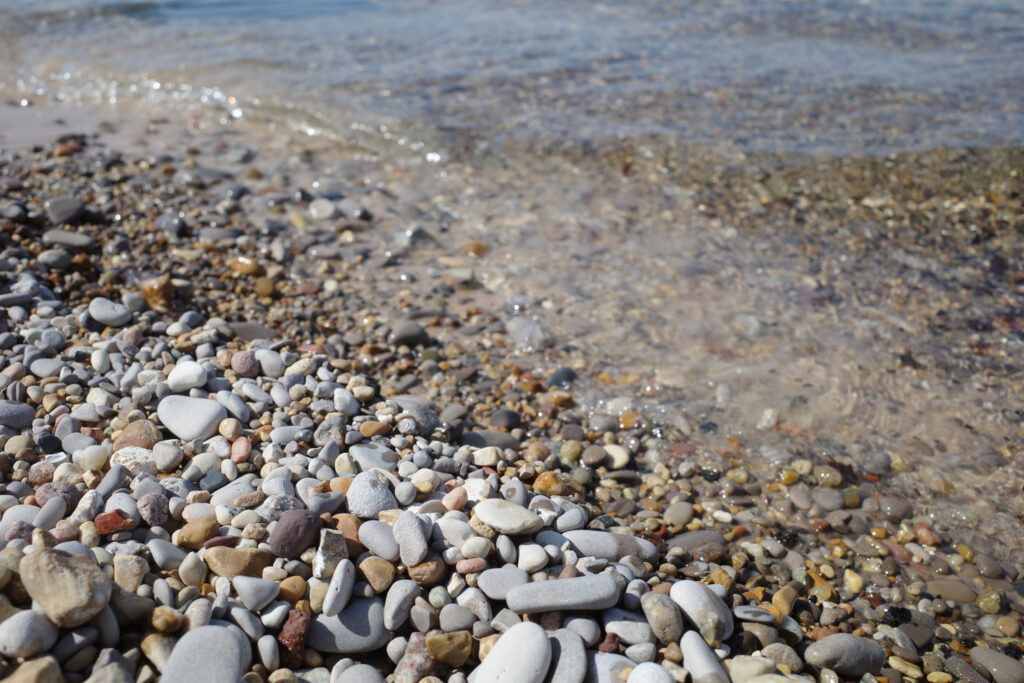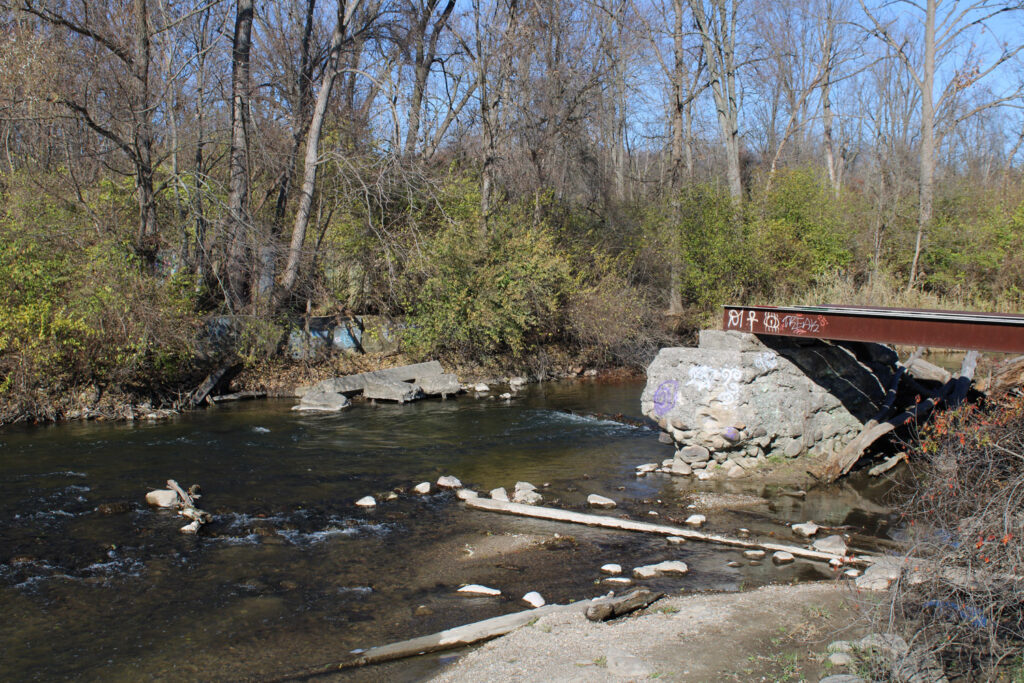Charlevoix — Most Michiganders know it’s a treasure to find a Petoskey stone. But why? Yes, it’s Michigan’s state stone, but what is a Petoskey stone?
Rewind the clock 350 million years to a time when the land that is now Michigan sat near the equator and was covered in a warm sea with a thick coral reef at its bottom. Eventually, this coral died. It was then buried in sediment and gradually dissolved as minerals replaced the organic material and hardened into rock.
Fast-forward a few hundred million years, and these fossilized coral rocks were picked up and spread by passing glaciers as they carved out the Great Lakes. A major concentration found a home in northern lower Michigan, where we now call them Petoskey stones—Hexagonaria percarinatum.
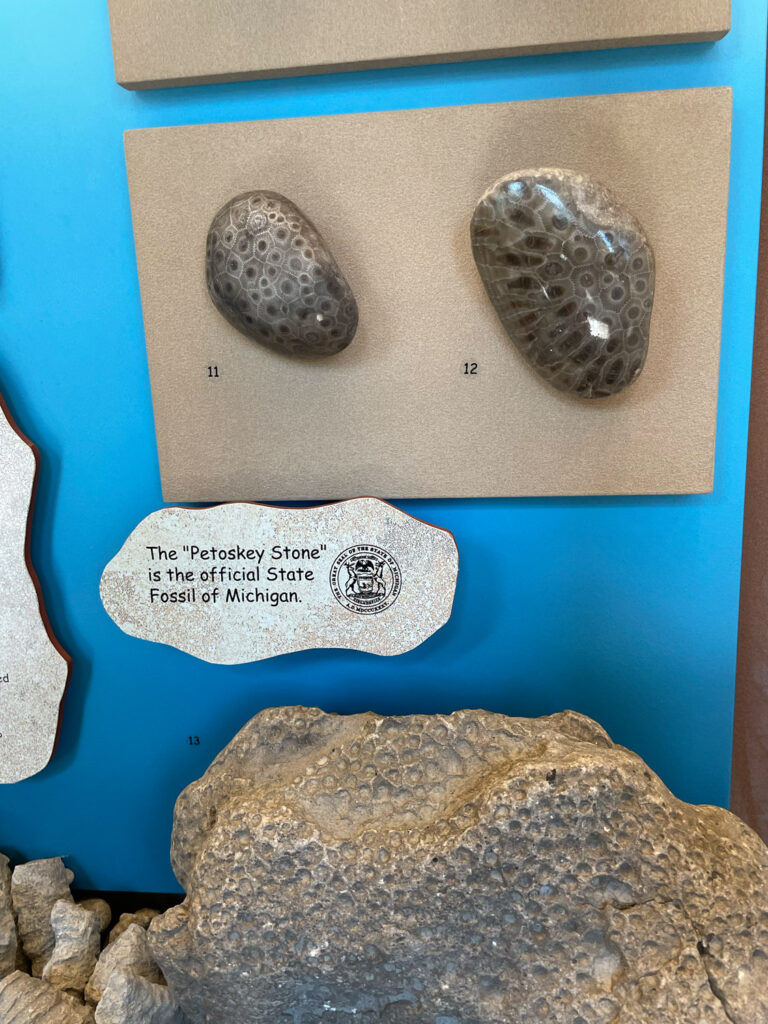
It’s relatively easy to find a Petoskey stone if you know what to look for. They can be found any time of year, but spring is the best time to look. The lakes give up their greatest gifts after winter whips up their shores. Going out after a storm or a good rain can yield rewards.
The rockier the beach, the better. Look along the shore and waterline but also among nearby trees. Petoskey stones are not exclusive to the beach.
Wet Petoskey stones are much easier to spot. This is the case when hunting for any type of rock. Many pickers prefer to look within the water for this reason, sitting just at the waterline or wading into the shallows. If it’s too cold for that, bring along a spray bottle, or, if you dare, give good candidates a quick lick as seasoned fossil hunters do.
Michigan rock picking is a big deal, especially in northern lower Michigan and the U.P. Rock hunters prowl for Petoskey stones but also for Charlevoix stones (a close relative) or the much-prized greenstone, Michigan’s state gem. The greenstone is unique to the Keweenaw Peninsula and, in fact, illegal to take from Isle Royale, where it’s most commonly found.
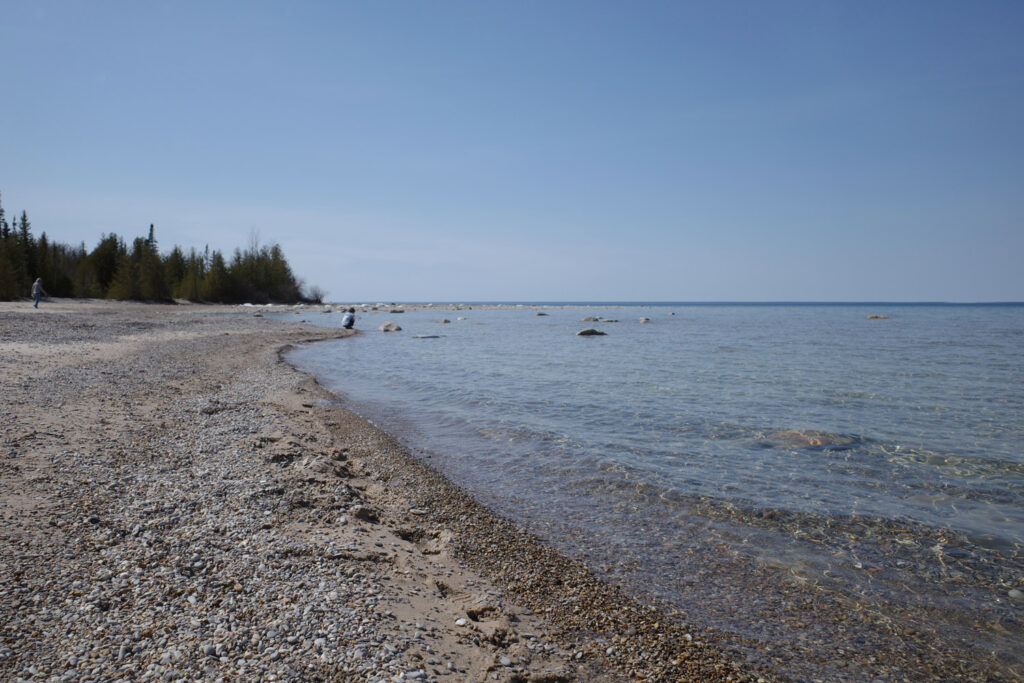
Lake Superior agates are another popular Michigan rock to find. There are banded agates, eye agates, and many other types, some of which even include copper. Just watch out for the common lookalike, banded chert.
Small pieces of copper called float copper are also a treasure. Other rocks Michigan pickers like searching for include prehnite, thomsonite, jasper, hematite, or banded iron formations. BIFs (as the latter are commonly known) feature varying shades of red, indicating the ubiquity of iron in the Upper Peninsula.
What if you don’t really care about rocks? Rock picking is still worthwhile. In many ways, it’s a form of self-therapy. A nature meditation.
There you are on an out-of-the-way stretch of beach. There’s no deadline. No rush to win or finish or be the best. Any age can participate. Nature is all around, and you are in it. You can let your thoughts wander or just focus on the rocks and listen to the soft lapping of the waves against the shore. Time can stop for a moment.
Modern-day conveniences and entertainment have made it nearly impossible to stop and be still like this. Even a hike in the woods or a fishing trip are laden with high-tech gadgets and gizmos. Selfies of you at the summit or the fish you’ve caught.
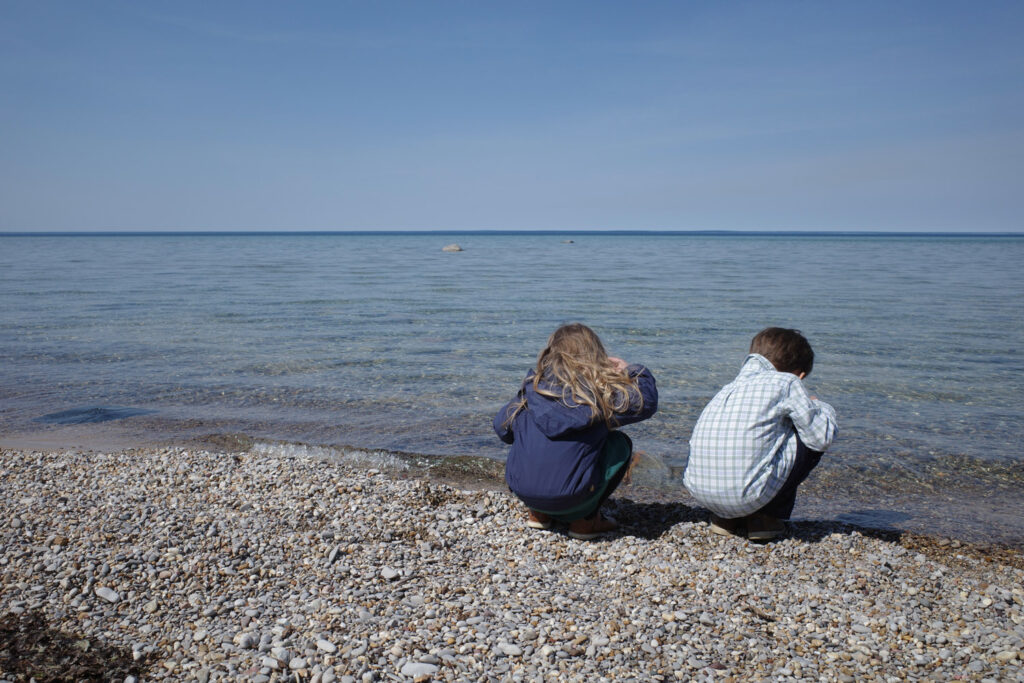
No one wants to see your rock pictures, let’s face it. But you’re happy to take a small jar of treasures home. And besides, it’s the experience that really matters.
Rocking hunting in Michigan makes you ponder: How is it that right where you’re sitting was once near the equator? How is it there was once a miles-tall glacier here? A mastodon trudging across the frigid landscape. American Indians pulling up their canoes. It almost feels impossible.
Yet here’s the evidence. Tiny, marvelous remnants of lost time in your hands. In a Petoskey stone, sunbursts that shimmer in the light when they’re wet. A clear surface, made smooth and shiny by the constant tumult of Lake Michigan over and across the years.
Take it home. Polish it. Glue a magnet to it. Hang it from a string. Drop it in a vase with flowers. Put it next to your bed.
During the coldest days of winter, look at it and remember the moments you sat in the warm spring sun along the lakeshore and felt history within your hands.
Ditch therapy. Try rock picking.
Faye Root is a writer and a homeschooling mother based in Northern Michigan. Follow her on X @littlebayschool.
